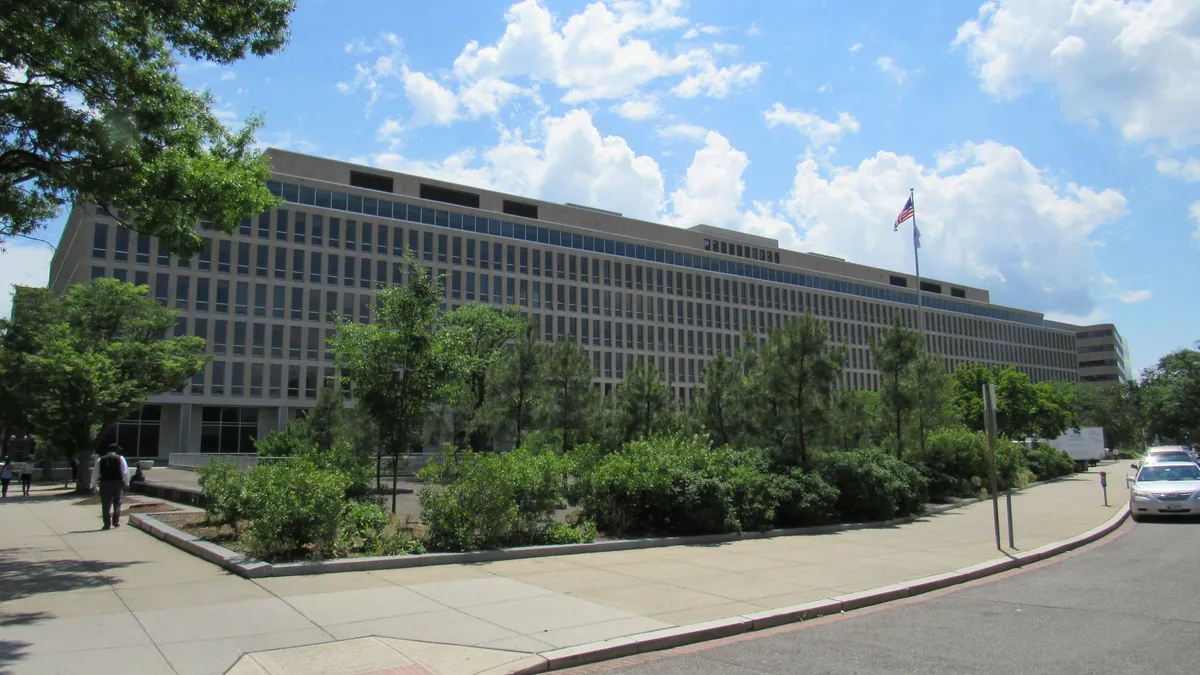Dive Brief:
- The U.S. Department of Education missed its October deadline to finalize two long-awaited sets of Title IX regulations, delaying their release once more. The department has not announced a new date of expected release.
- As of Tuesday, the Office of Management and Budget, which reviews any rule before it's finalized, hadn't reviewed either of the rules, one on athletics and the other containing broader Title IX guidance, according to the agency's website. OMB reviews can take up to 90 days.
- The delay comes as nearly 130 civil rights, gender justice, and survivor advocacy organizations urged "immediate action" and said the administration's decision to keep the Trump administration-era rule in place is "a worrying and dangerous trend."
Dive Insight:
The department had originally planned to issue the Title IX final rules in May 2023, but postponed that deadline to October after receiving overwhelming feedback during both comment periods.
In response to the missed October deadline, an Education Department spokesperson reiterated that the agency "received a historic number of comments, and the Department is working overtime to ensure that each one is thoroughly read and carefully considered."
"We are utilizing every resource at our disposal to complete this rulemaking process as soon as is practicable," the department said in an email Tuesday afternoon.
The broader Title IX regulatory proposal announced last June would, for the first time, protect LGBTQ+ students under the federal anti-sex discrimination law. The proposed rule received more than 240,000 comments during its public review period that ended in September 2022.
That rule was released separately from the department's Title IX athletics proposal, which came much later in April 2023. The comment period for that rule, which ended in May, garnered more than 154,000 comments.
The athletics proposal, also for the first time, would give schools a framework to decide whether to allow transgender students to participate on teams aligning with their gender identities. Considering this final rule will be entirely new, schools will likely have to dedicate time and resources ironing out its language and implementation.
Title IX policy experts speculated that the department released the rules separately as a strategy to navigate anticipated litigation. Republican lawmakers and right-leaning organizations have made clear such lawsuits are in the pipeline.
In the meantime, however, schools are preparing for the third shift in Title IX policies in just as many administrations — and to expend time and resources on training for compliance once the new rules are finalized.
The 2020 regulations from then-Education Secretary Betsy DeVos overhauled the reporting, complaint and investigative processes under the civil rights law that some public school advocates and Title IX experts worried was counter to how schools operated and required extensive training. Changes included significantly expanding which district employees must trigger procedures when notified, separating Title IX investigators from decision-makers, and lengthening the resolution process.
The Education Department's new proposal would change some of these pain points, like bringing back a single-investigator model and eliminating certain waiting periods that would extend the Title IX timeline.
However, while the department sifts through the 394,000 comments received on the two proposals, it has made clear that districts must continue to abide by the 2020 regulations.
"So, we need relief from these 2020 rules, but schools and colleges also need time to implement the new regulations and get good at complying with them," said Brett Sokolow, a leading Title IX attorney and chair of the Association of Title IX Administrators' advisory board, in an email. "Thus, each delay is met with a sense of reprieve and frustration."
Once a rule is finalized, it can go into effect as soon as 30 days after its release, but major rules must be published at least 60 days before their effective date. Under DeVos, the 2020 regulations took two years to cement into a final rule, and they went into effect about three months later.
















